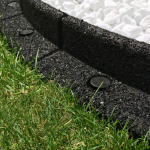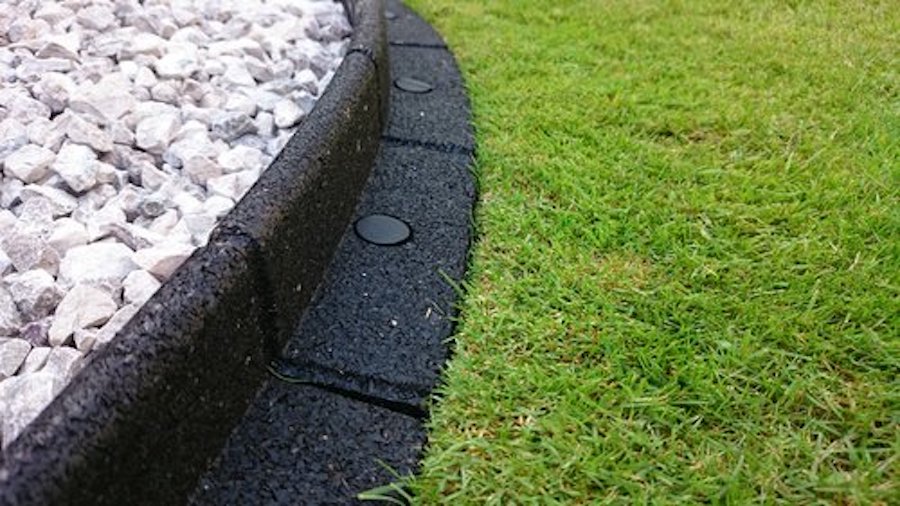Garden border edging on grass can be a right pfaff. If you’ve ever tried using that flexible plastic or metal stuff that is pressed into the ground, you’ll know exactly what I mean by this.
Those solutions can often break, be very difficult to install and just look plain ugly.
So, we decided to try out something new – and here is our FlexiBorder garden edging review.
What is Flexiborder Garden Edging?
FlexiBorder garden edging is a bendable rubber solution for creating borders in your garden. It comes in different colours and for this review we selected black. Other choices include red, brown and grey.
The rubber is actually recycled, so this is an all-around win for the environment. The UK parent company behind FlexiBorder is EcoShape.

Benefits of FlexiBorder
Here’s a quick summary of what’s good about this edging product:
- Made of recycled rubber
- Weatherproof (and won’t fade)
- Easy to install and move
- Lawnmower safe
- Bends up to 70 degrees
- Child-friendly
FlexiBorder Installation
The goal in this case was to fit a border that could be used in conjunction with a robotic lawnmower in a fairly large garden. The idea was to set it up so that the mower could mow right up to the edge of the grass.
Note: For this, you will need a robotic lawnmower that has the ‘Edge Mode’ feature. Otherwise, I would not recommend Flexiborder for grass edges unless you want to trim the grass right next to the border where it will grow long due to being out of the reach of the mower.
The FlexiBorder system, with its raised edge, therefore looked to fit the bill for complementing a robotic lawnmower that has Edge Mode.
Adding the flexible border is as straightforward as it gets. The FlexiBorder is placed where you need the border. Then, use the supplied fixing pegs and hammer them through the holes.
When you add the adjoining pieces, insert the two connector dowels (they look a bit like rawl plugs) and push the next piece into it using its corresponding holes.
It’s that simple. Here’s an instructional video showing how it’s done. Well, except for the actual joining of two pieces:
Cons of Flexiborder
We think that this product is excellent. Revolutionary, even. If there are any downsides then they are minimal. But, in the spirit of a well-rounded review, here are some points to note:
- Sometimes when bending FlexiBorder around a tight angle, a slight gap can be visible between each join
- It can be a little difficult to get the inserted connector dowels to go all the way in
- It was quite expensive. Each piece costs about £11. In a big garden, it’s going to end up as a lot
- Sometimes the top of the plastic pegs can snap off when being hammered in. This occurred when one of the pegs encountered an underground rock during its descent. Damn! The tip here is to hammer lightly until you’re sure that it can go all the way down without getting stuck.
This video shows a practical implementation of FlexiBorder. The presenter puts the product around some trees that are filled with mulch.
Flexiborder Garden Edging Review: Final Thoughts
We added thirty lengths of Flexiborder edging to a garden and the end result looks great. Grass can be grown all the way to the edge to create a look with visually clean lines.
The robot lawnmower underground wire was adjusted to be just the correct length away from the FlexiBorder so that everything works in harmony.
It’s pricy for what it is but when you look around at garden products, there is really no comparison to the concept of using flexible rubber lengths.
It’s amazingly simple as a concept, and to install. It ticks all of the boxes in this reviewer’s opinion. Highly recommended for great-looking garden edge
